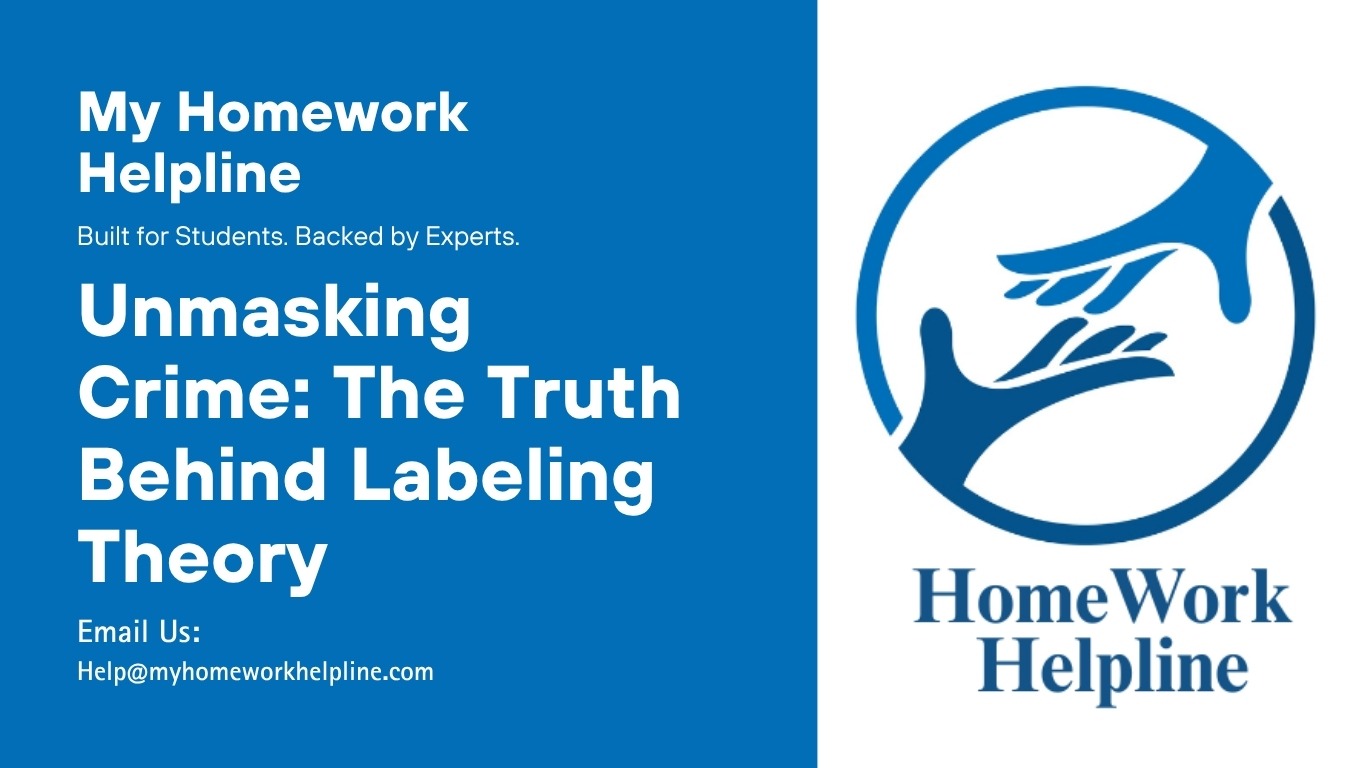Labeling Theory and Crime: A Critical Perspective on Cause and Effect
The labeling theory highlights that people labeled by others as conducting certain actions and behaving in particular ways will, at some point, reflect such behaviors (Bernburg, 2019). In other words, the theory suggests that if a person is labeled good or bad, they will reflect whatever label given over time as they start believing it is true. I disagree with this theory because I do not believe that an honest person could become a thief just because society labeled them as one. Additionally, someone’s innate nature, whether good or bad, can be difficult to change just by labels. However, societal rumors do not just arise from nowhere. For one to be given a particular label, one must have exhibited a behavior associated with it.
For deeper insights into criminology theories and their legal implications, visit our Law Homework Helpline and get expert academic guidance tailored to your needs.
Negative labels do not cause crime. What causes crime are factors like unemployment, poor standards of living, drug abuse, and many other socio-economic factors (Jonathan et al., 2021). Research by (Lee et al., 2017) has linked negative labels with the development of deviant criminal behavior, citing that people labeled as criminals are more likely to engage in criminal behavior due to the labeling. Most people do not want to be associated with deviant behavior even though they may commit such actions due to society’s reaction to it; thus, negative labeling may reduce deviant behavior in some way (Rocheleau & Chavez, 2016). The best way to explain the association between crime and labeling is that people who commit crimes are negatively labeled because of such actions. Therefore, labels are not the causes of crime but rather the result of crime. Regardless, it is important to acknowledge that crime results from a complex interplay of factors as some people will engage in deviant criminal behaviors despite the labels assigned, while for some, the labels assigned might influence them to such behaviors.
References
Bernburg, J. G. (2019). Labeling Theory. Handbooks of Sociology and Social Research, 179–196. https://doi.org/10.1007/978-3-030-20779-3_10
Jonathan, O. v, Olusola, A. J., Bernadin, T. C. A., & Inoussa, T. M. (2021). Impacts of crime on socio-economic development. Mediterranean Journal of Social Sciences, 12(5), 71. https://doi.org/10.36941/mjss-2021-0045
Lee, J. S., Tajima, E. A., Herrenkohl, T. I., & Hong, S. (2017). Effects of formal and informal deviant labels in adolescence on crime in adulthood. Social Work Research, 41(2), 97–110. https://doi.org/10.1093/swr/svx003
Rocheleau, G. C., & Chavez, J. M. (2016). Guilt by association: The relationship between deviant peers and deviant labels. Deviant Behavior, 36(3), 167–186. https://doi.org/10.1080/01639625.2014.923275

